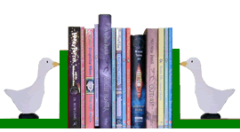A good cover is vital to your book’s success because it’s the first thing your potential readers see. If you have a good eye for design, the right software and the experience to use it, there’s no reason why you can’t try to create your own cover.
If you haven’t got the right skills or you find the task too hard, it’s best to pay an experienced designer to help you. Don’t penny pinch and use an amateurish cover because that will suggest that the contents of your book are amateurish too. But even if you are using a designer, it’s still worth learning the basics of cover design so you understand what they are doing.
Targeting your readers
It’s vital that your cover appeals to your target readers. Many genres have unwritten cover conventions – chick lit often has drawings of long legs with high-heeled shoes, horror uses dark colours and funny stories usually have cartoon-style pictures. These conventions help potential readers decide what a book is about so look online or in a local bookshop to find out what works for books like yours. As you do so, keep your eyes open for any symbols that seem particularly effective or over-used.
For example, when I was working on There Must Be Horses, I noticed that many of the deeper, more emotional horse books used a horse’s eye on the cover to differentiate them from stories about winning red rosettes. As a result, I opted for an eye on my cover and added a solitary girl in the foreground to suggest the loneliness of my main character.
The importance of size
When your book is sold online, your readers will see a far smaller version of your cover than they would if they were looking at a paper copy. It’s therefore important to make sure that your cover design works well at the size it will be displayed on Amazon and other online bookshops. Fussy pictures, large amounts of text and thin lettering can all be difficult to see when shrunk down.
Cover images
Although some non-fiction covers are purely text, the majority of book covers are based on one or more strong images. Choose a high quality, easily recognised image that helps convey the subject of the book. It can be effective to focus in on a detail of a larger object: the nib of a pen, the hilt of a sword or the lips of a woman. Similarly a single rose may work better than a photo of a rose garden. (more info on finding pictures for covers)
If you are publishing an ebook, you can put this image anywhere you like and even let it form the whole cover. However, if you’re producing a print edition (or think you may want to use the same design on one in the future), it’s best to avoid putting an image right up against the left hand edge. If you don’t, you may find that discrepancies in printing result in part of the picture wrapping round onto the spine which will look wrong.
Adding the text
The text on the cover includes the title and the author’s name. In some cases, you may also need a sub-title (especially for non-fiction) and a series title. The more text there is, the harder it is to make it legible at smaller sizes so don’t include more than you actually need. Reviews and other information about the contents just add clutter and reduce the impact of the cover.
The text is as much part of the design as the image. Don’t assume it has to be centred on the page or that it even has to be in a straight line. And don’t assume it has to be either black or white. It often works well to pick up a colour from the image you are using. For example, for the cover of Alien Sheep, I put the title in the same shade of green as the sheep and distorted the text to fit into the transporter beam.
Note: avoid using red on green or green on red because those combinations are difficult for people who are colour blind.
Choosing the right font
There is a dazzling selection of fonts available – far more than came with your word processing software – and your market research may have shown up some that work particularly well for books like yours. Don’t be afraid to experiment and try several different options before you decide on the right one for your book.
Fontsquirrel is a useful source of free fonts, including many that convey a particular genre or period of history. The site is well-designed and lets you try out your title in a particular font before you decide to download. That’s where I got Orbitron – the angular font I used to give a sci-fi feel to The Green Sheep.
Making your title easy to read
It can be difficult to make your title stand out if you are writing across an image. One way to deal with this is to put the letters on a feather-edged partially transparent rectangle that will hide fade out the image behind them. Putting a glow around the letters can also be effective. An alternative solution is to put the title within a single-coloured shape, as on this example.
Series issues
If you are publishing a series, consider giving each cover a similar style to reinforce the idea that the books go together. This similarity can come from using the same fonts on all the books, positioning the images in the same way and/or having a series logo. Again it’s worth doing some research to see how other series are branded. Then brainstorm ideas, keeping your readers in mind.
Diana Kimpton
